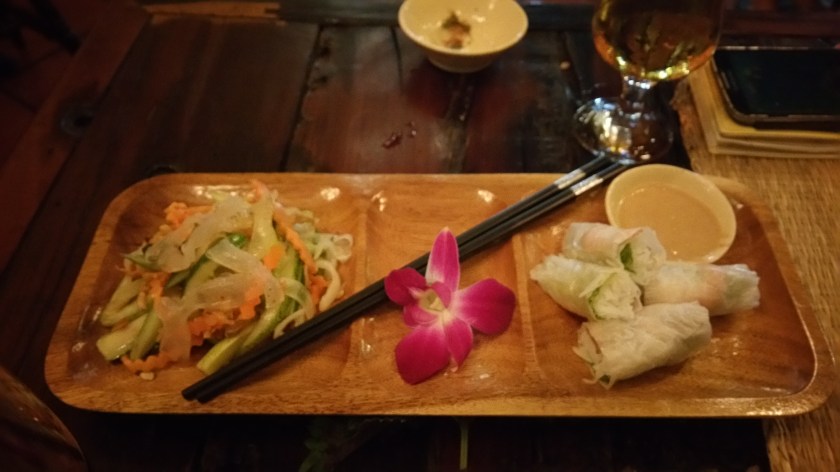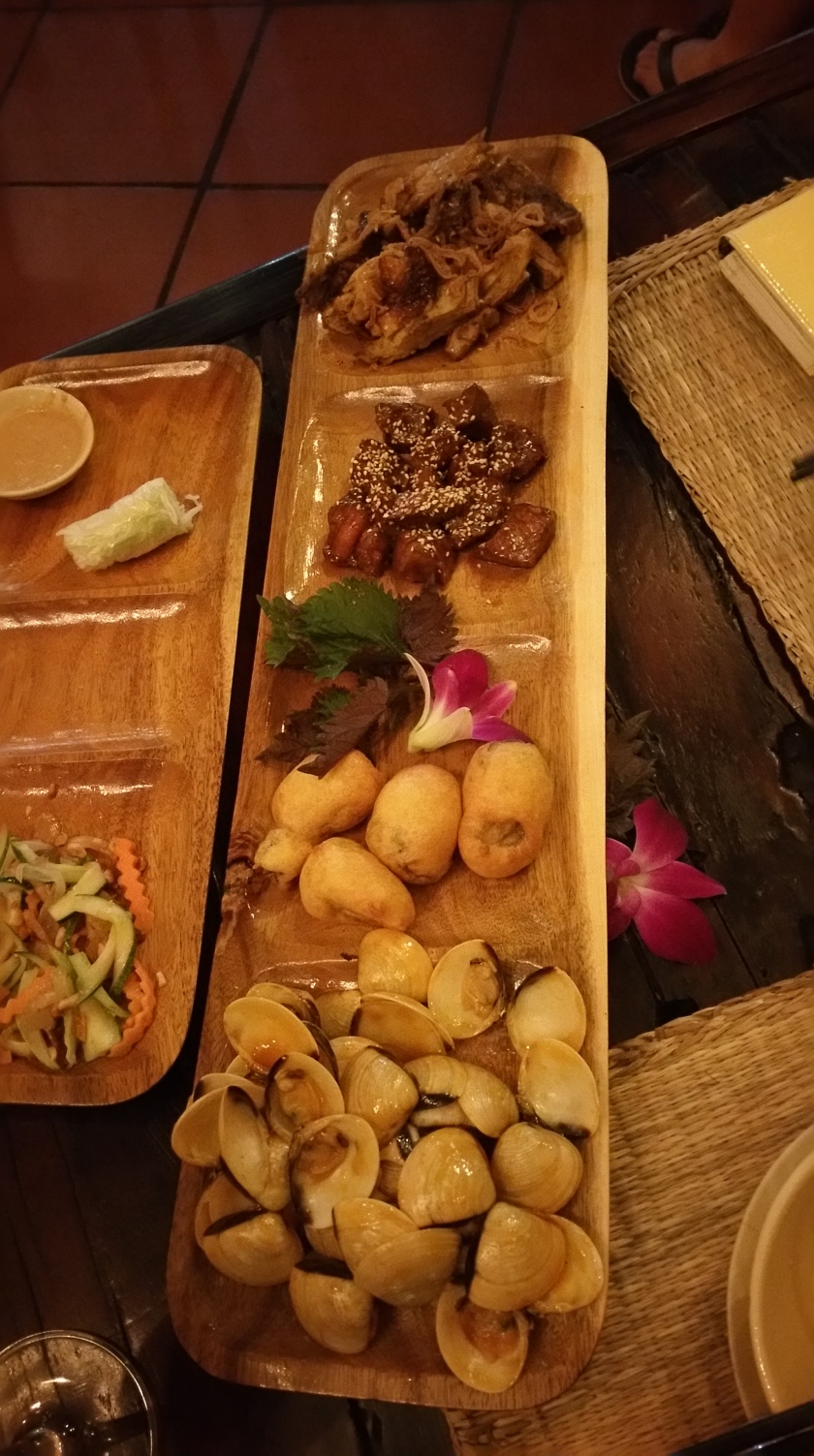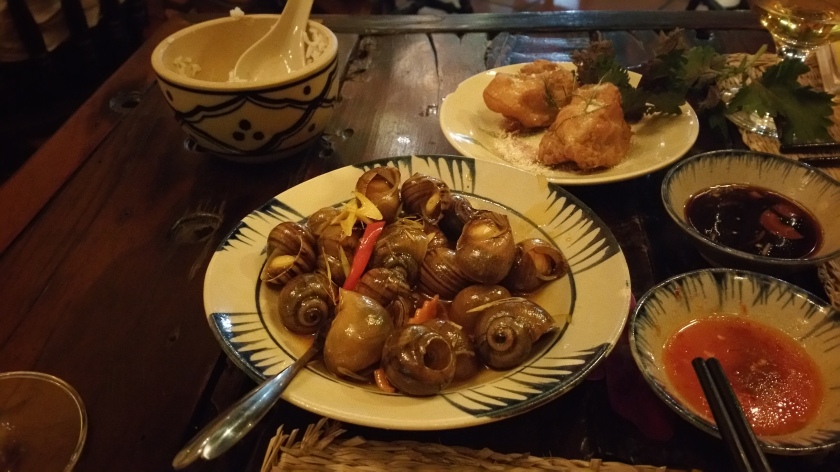РУССКОЯЗЫЧНАЯ ВЕРСИЯ ПО ЭТОЙ ССЫЛКЕ. CLICK HERE FOR RUSSIAN VERSION.
11 June 2017
Once again we’ve had a very intense day, and our legs are almost falling off. As usual, the morning started with a breakfast, a very varied and tasty one, like we’re already used to. At 9am, Sunny was waiting for us at the hotel reception for a tour of Hanoi.
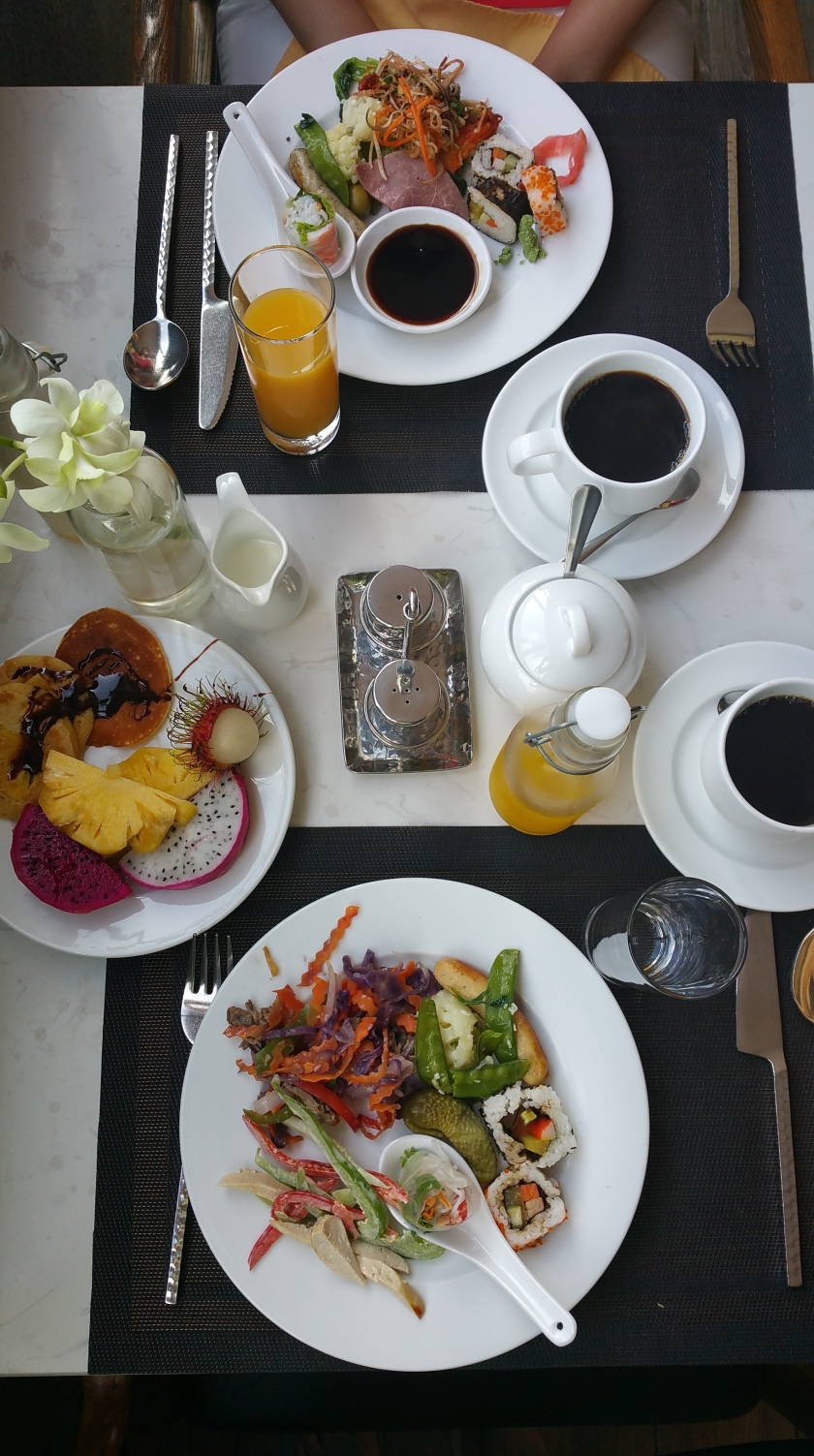
We were offered two museums to choose from: the History Museum or the Ethnology Museum, and we chose the latter, which turned out to be an excellent choice. What was especially good was that Sunny went with us and made very interesting comments about most of the exhibits.
The museum is dedicated to the culture and lifestyle of 54 different nationalities officially recognised in Vietnam, 86% of which are viets.
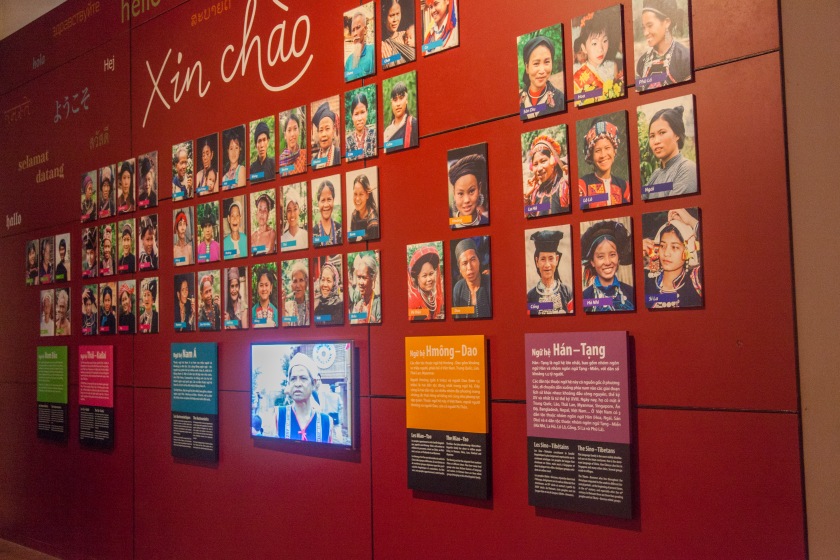
Hmongs, for example, still have the custom of kidnapping brides. The kidnapped girl is brought to the house of the potential bridegroom, where she is locked in a room for three days, after which she is unlocked and free to leave. If she does, the rejected groom either switches to another “victim”, or kidnaps her again, but without the chance to leave this time. But in this case, she can demand a huge ransom for herself, whether it’s 300 or 3000 buffaloes, and if the groom can’t afford to pay that, his family becomes the laughingstock of the whole community.
The architect, who designed the museum building, was so impressed by the sight of a peasant on a bicycle loaded with hundreds of fishing baskets, that she bought the whole batch along with the bike itself.
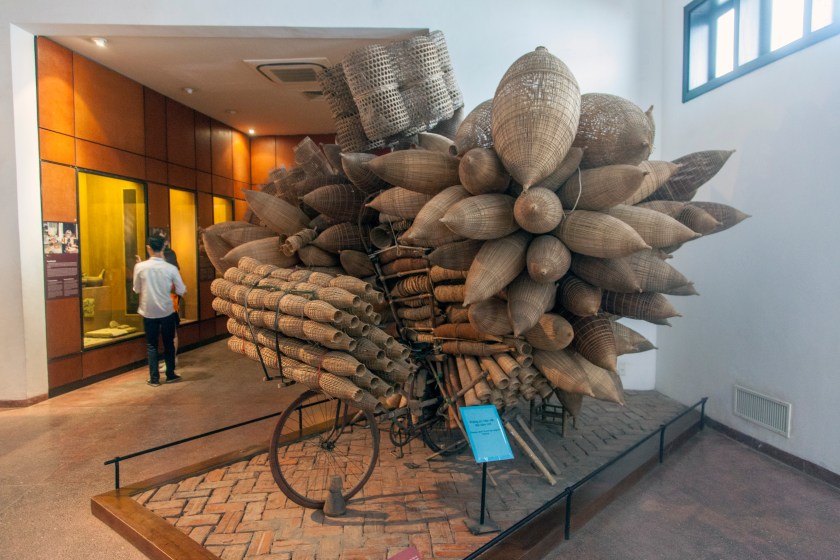
One of Vietnam’s major ethnic minorities are Tai people, akin to the Thai. A woman is very highly regarded and revered much more than a man in the Tai culture – there is even a house decoration, consisting of small bags, hanging on the window, according to the number of girls in the family.
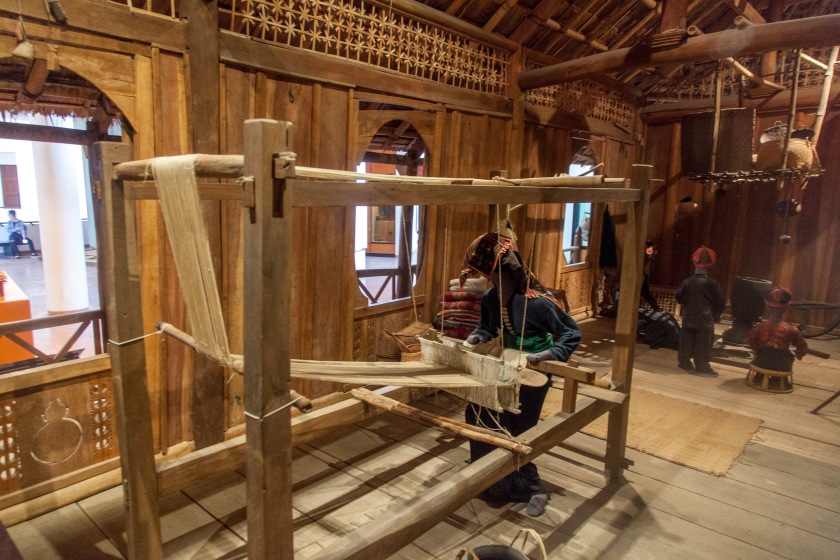
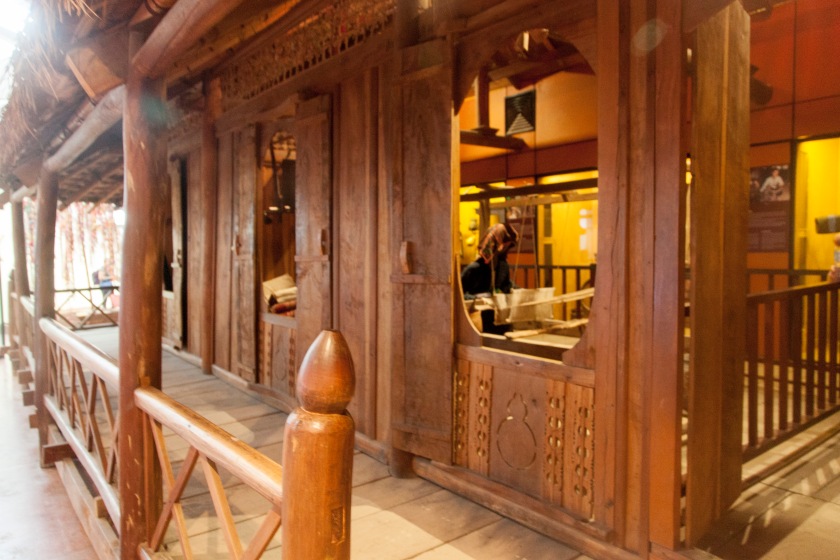
As for the roofs, these are decorated with such crossbred sticks as in the photo. A newly married couple would use the simplest version – the first on the right in the photo. When the wife becomes pregnant with the first child, the decoration changes to one like the first on the left, and then, when the child is born, like the second on the left. The house owners are free to do this themselves. But the remaining two decorations are awarded by the community, depending on this family’s contribution to the community life: the greater it is, the greater the chance to get more “antlered” sticks.
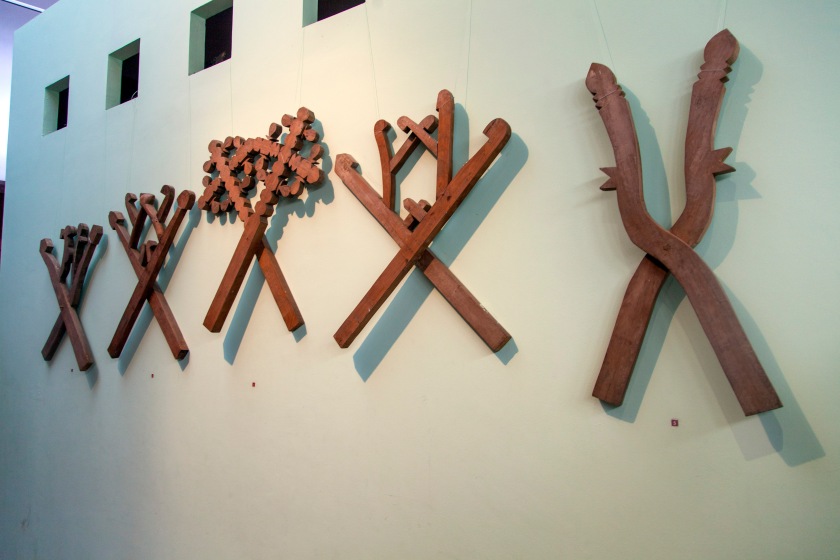
The Yao people’s tradition obliges all boys to complete the male initiation ceremony when they are about 14, after which they are considered full-fledged men, are allowed to participate in community meetings etc. Without this ceremony, even a 50-year-old man has the status of a boy – and the rights of one too! By the way, it’s interesting how community is mentioned in connection with almost every ethnicity here.
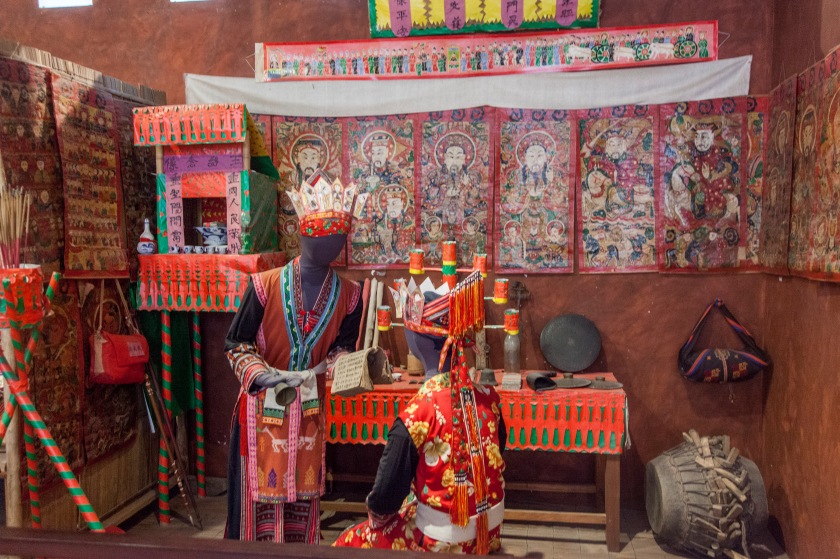
The second part of the museum is open-air, where we get the opportunity to see traditional houses of different nationalities. And, according to Sunny, these houses were brought from the respective regions, and not built specifically for the museum. In the Cham house, we feel a cognitive dissonance evoked by a TV set hanging on the wall, amid a simple and traditional interior. I understand that there is nothing strange about this, but on the other hand, Sunny himself, pointing to a picture of an ethnic minority representative in traditional clothes with an American T-shirt visible underneath them, tells us how surprising he finds it that when asked where they get such clothes, these people respond that they do it online. He also notes all the time that the state and society have done a lot to improve the lives of these isolated peoples, who have a very traditional lifestyle and who don’t always come into close contact with modern civilisation.
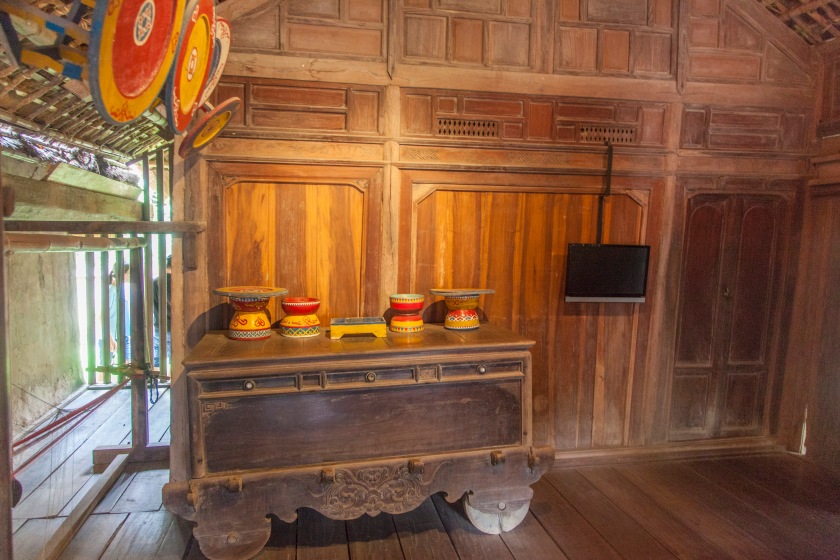
A traditional house of the Viets must have an altar where the ancestors are worshipped. And the daughter-in-law of the family is not allowed to pray there, because she has her own ancestors. In one of the pantries, a collection of dolls made of some kind of light wood, perhaps cork, is collected – these are the dolls for traditional water puppet shows, one of which we were to see in the afternoon.
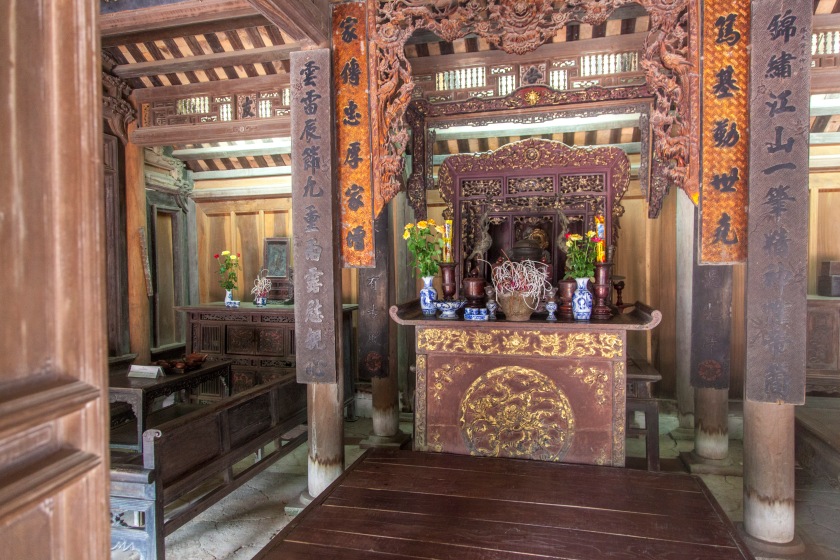
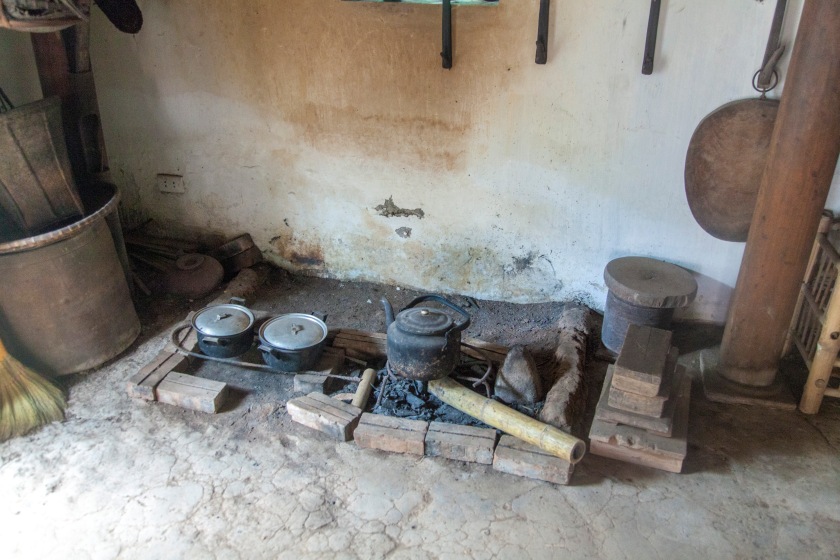
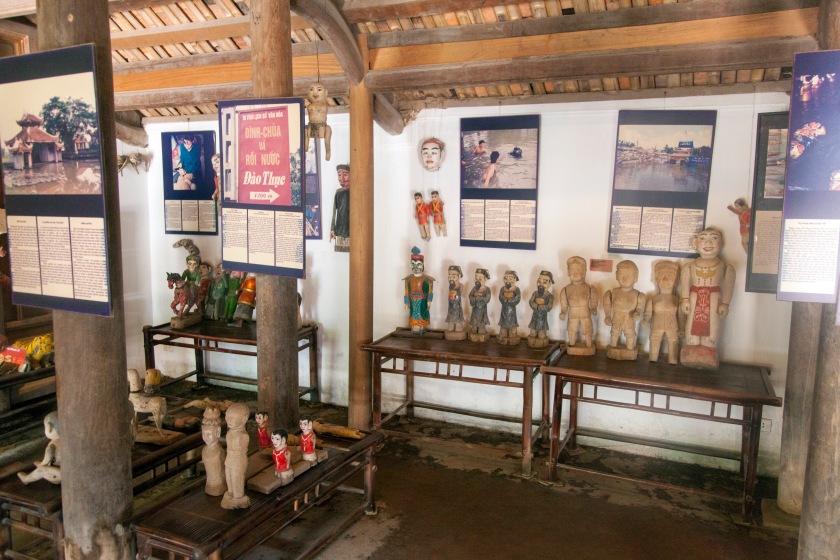
The house belonging to the people of the Bahnar is the highest here, about 20 metres. It’s not a residential house, but a communal one – it should be the highest in a Bahnar village and no one has the right to build higher.

And the longest house is that of the Ede people. I thought right away that it looked somewhat Indonesian, and almost immediately Sunny explained that the people are akin to the Indonesians. They also put the woman in the first place, which is why the most honourable places in the house, and the wider and more comfortable staircase are for women, and a woman’s breast is sculpted on the latter, so it’s pretty self-explanatory. Actually, the reason why the house is so long is because each daughter is entitled to a separate room, where she lives alone before her marriage, and with her husband thereafter. The sons all share a common room, as after marriage they will move into their wife’s house anyway.
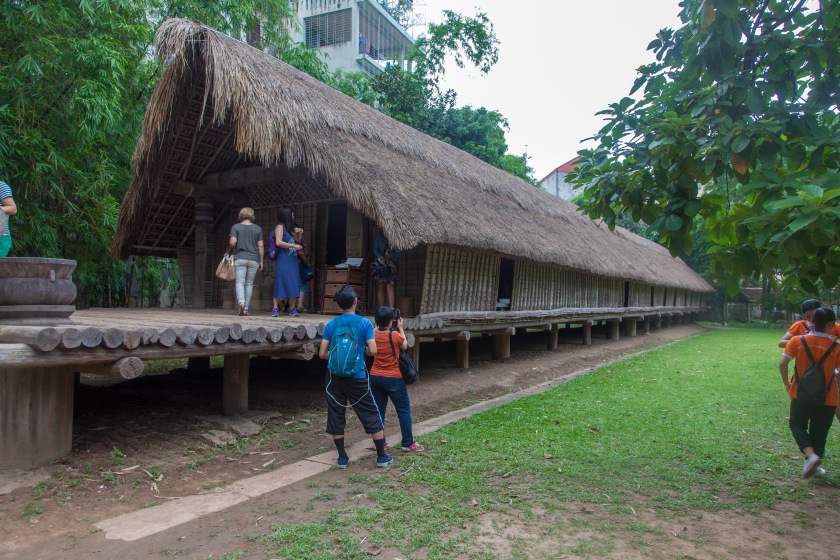
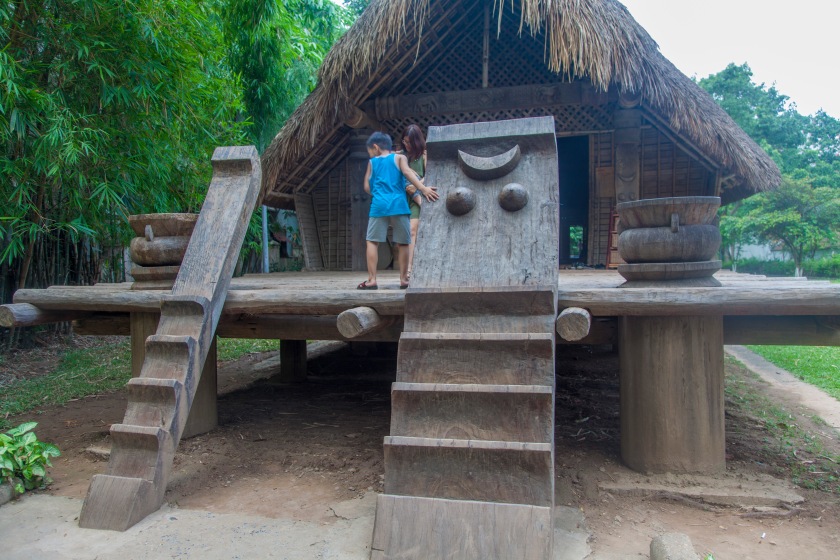
There is also a tomb, pertinent to the Giarai people, and it features figurines depicting all stages of a human life, placed around its perimeter.
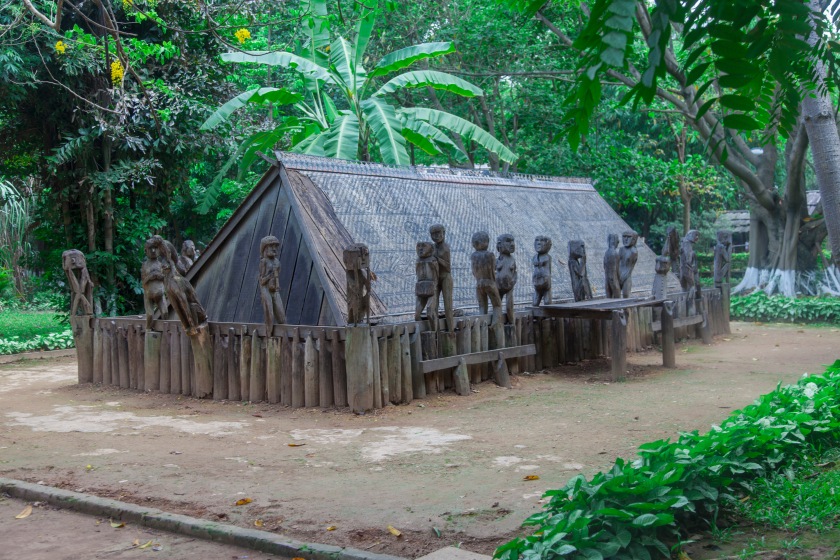
We spent around two hours in total in the museum, and as I already said, absolutely didn’t regret our choice, as the visit was very interesting and informative. From there we headed to the Temple of Literature, which was founded as early as in the 11th century and which had the first university of Vietnam in its territory.
There is a tiger depicted on one side of the gate and a dragon on the other, and Sunny explained that any place with these two animals present on the gates (the tiger should be descending from above and the dragon is together with a koi carp) is somehow connected to science and education.
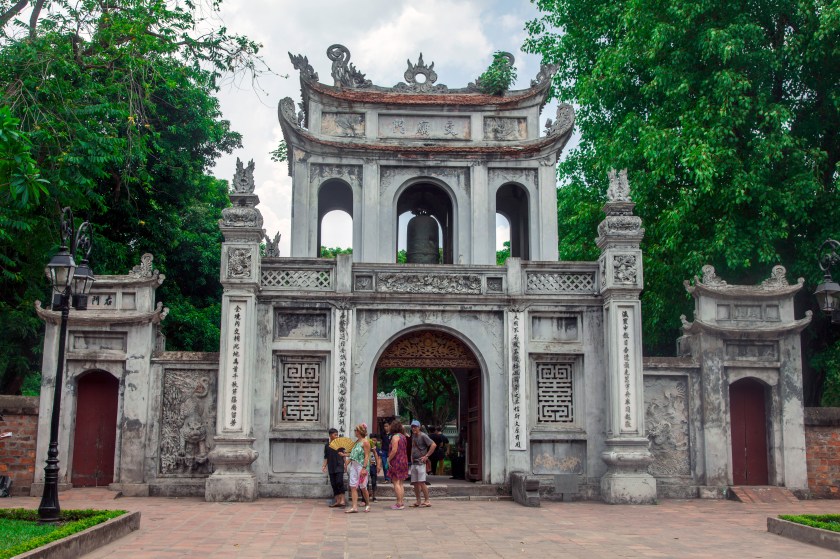
The temple has been destroyed several times, including during the Indochina War, so almost everything that we see here was reconstructed. As for the residential premises for students, for example, these don’t even exist any longer. Only one of the original buildings remains, and it’s also depicted on a 100,000-dong bill.
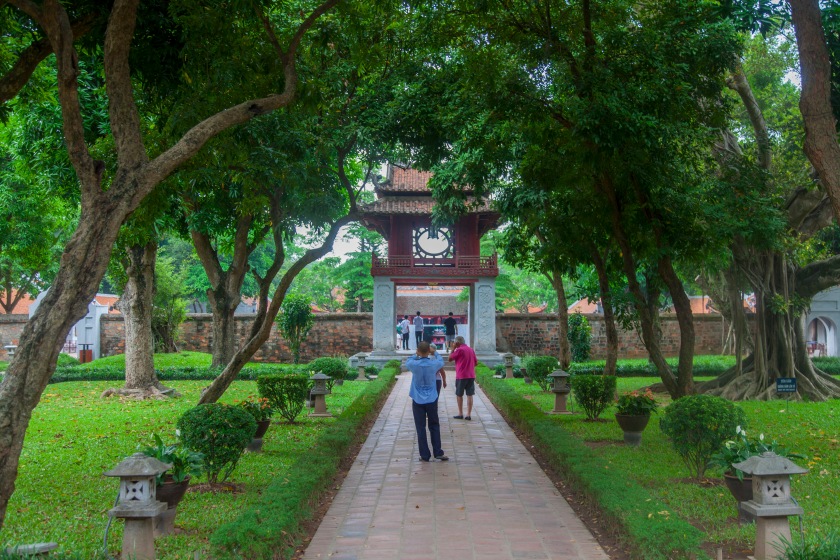
The best students used to get selected for prestigious government jobs, with their names immortalised on special stone steles. For that the students had to pass difficult exams, some of which took years to prepare for, and the examinations were conducted in several stages, the last one being assessed by the emperor himself.
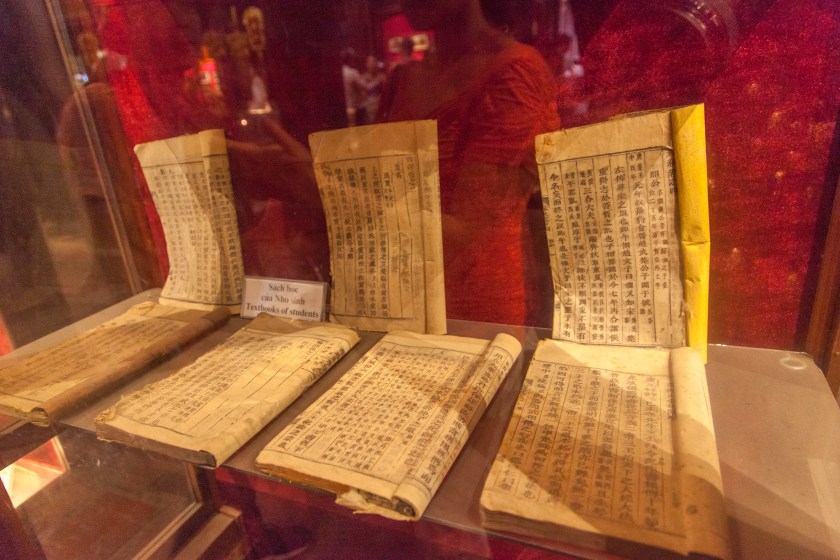
The temple is dedicated to Confucius, hence his statue here. But apart from him there are others, for example, on the upper floor there are statues of the monarchs who contributed the most to the development of the imperial academy.
Sunny explained the difference between a temple and ta pagoda, but I still can’t say that it’s crystal clear to me. It seems like a pagoda is an exclusively Buddhist place for worshipping only, whereas a temple can also be Confucian, like this one, or for worshiping real people or even one’s own ancestors, and can be used not only for worship, but also for meditation or even community gatherings.
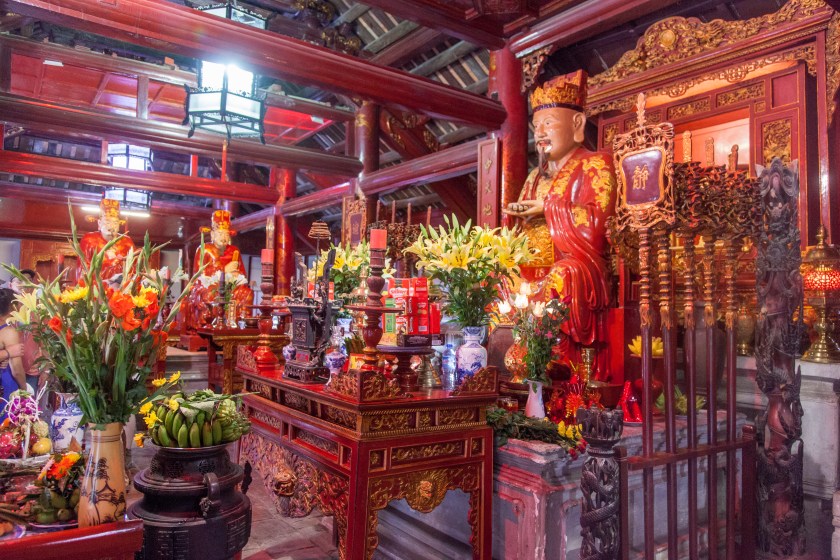
After a lunch break, which consisted of the freshest spring rolls with prawns and pineapple and delicious beef noodles, we moved to the French Quarter. Here, of course, you mostly see colonial buildings rather than the narrow houses attached to one another, as in other places.
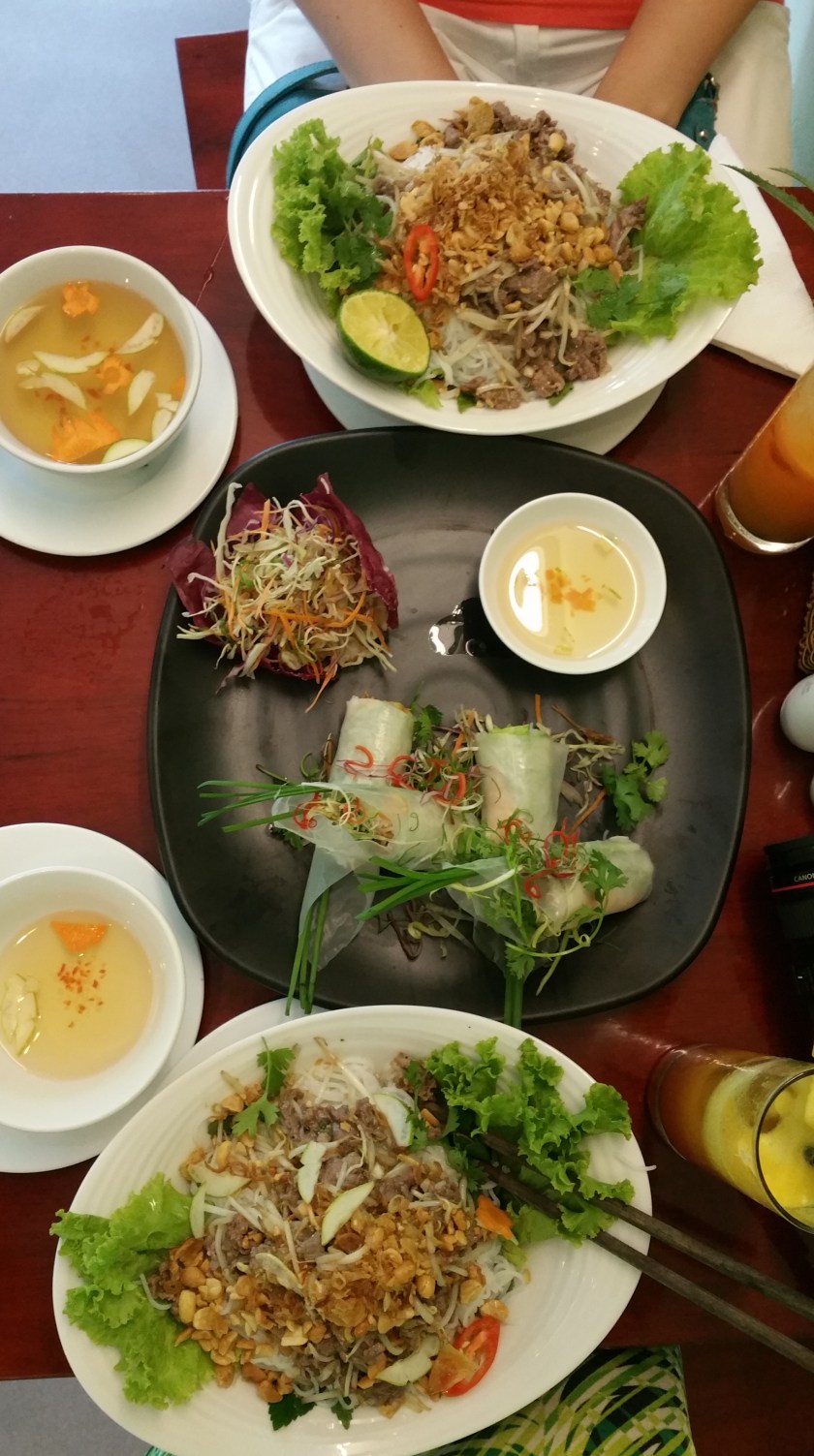
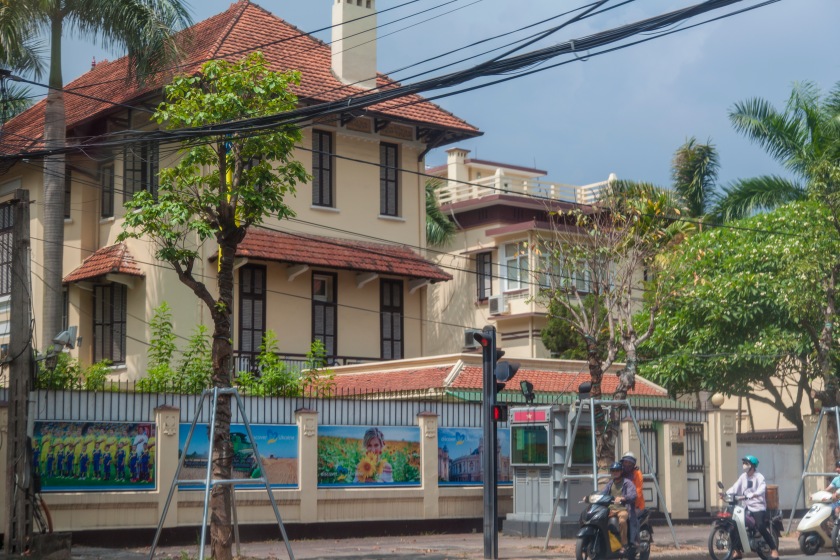
We were brought here to see the house where Ho Chi Minh lived, and walking across a fenced square with a flag, we see his mausoleum. The mausoleum is open for visits in the mornings several days a week, and we were offered to come here this morning, but we would have had to queue for a couple of hours, as it is Sunday, so we refused. Sunny told us that in Vietnam, especially in the south, there is a very ambiguous attitude towards Ho Chi Minh, but he personally respects him and believes that he has done a lot for the people.
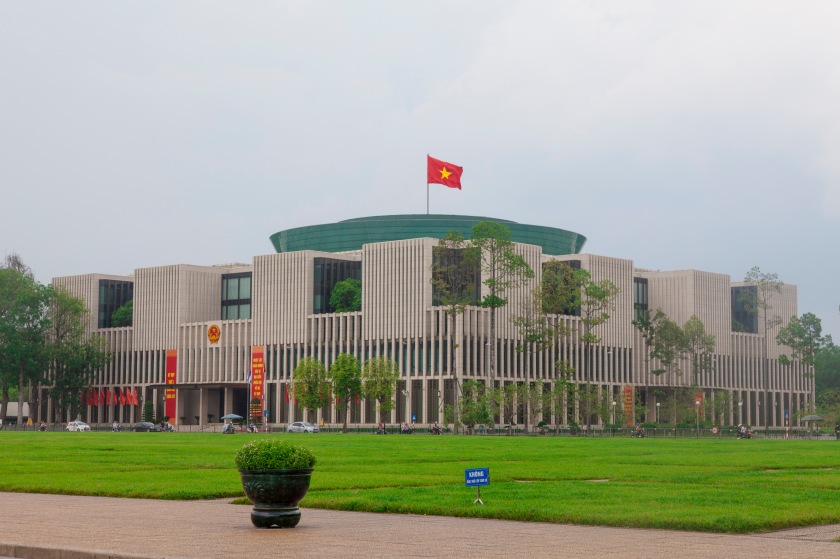
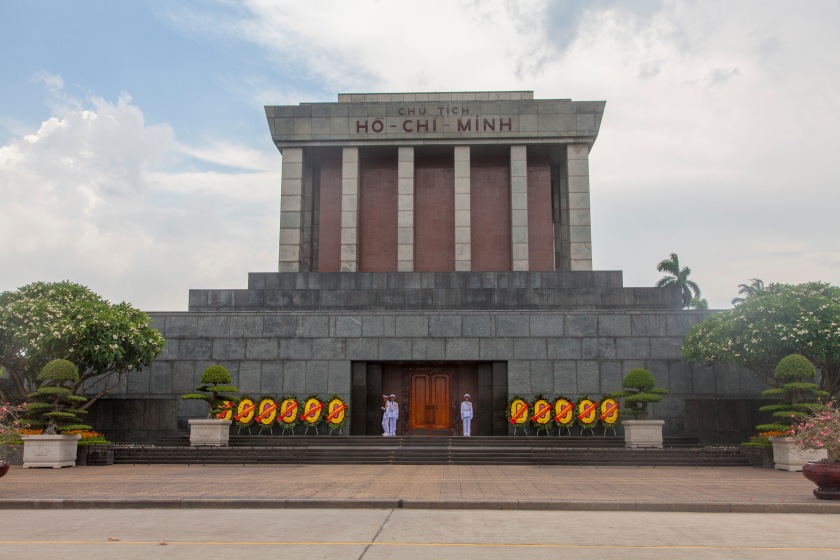
Next, we went to the botanical garden nearby, where the house museum is located, but first we saw a luxurious presidential palace in colonial style, which was built by the French, with tax money. Later, the palace was painted in a much brighter tone of yellow than what would have been appropriate for a French colonial building: the palace was to be seen among all this rich vegetation, and besides, the yellow colour symbolizes the power and the emperor in Vietnam, just like in China.
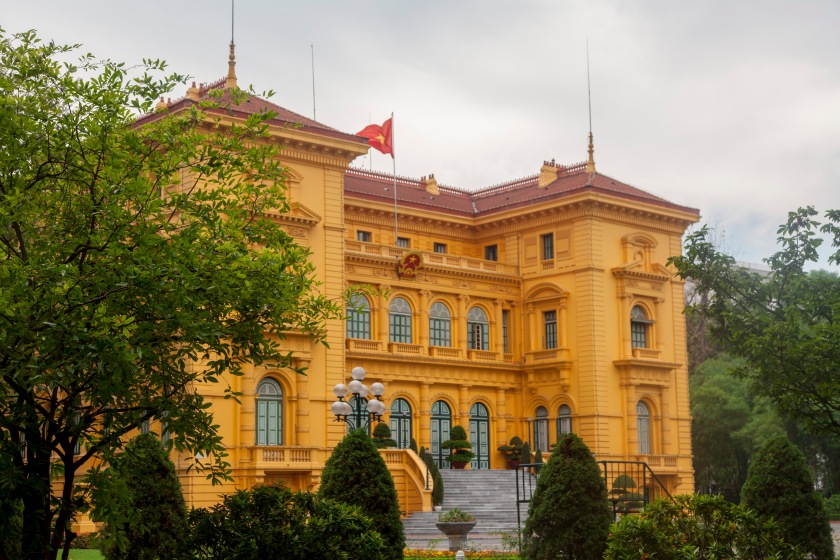
Nowadays this palace is used very rarely and for very special occasions, yet during Ho Chi Minh’s times it was used quite extensively. However, Ho Chi Minh refused to live there, choosing a more modest one-story yellow house right next to it instead. Through its windows we could see his dining room, study and bedroom, all with very modest decor.
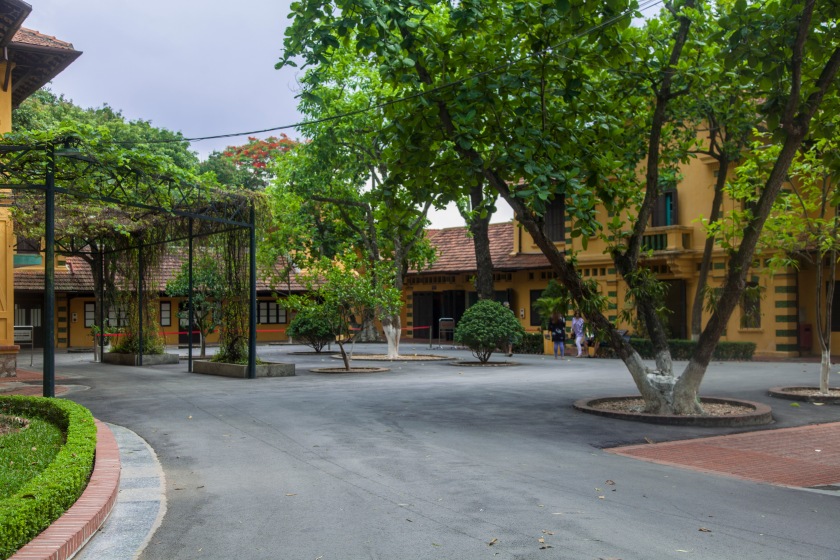
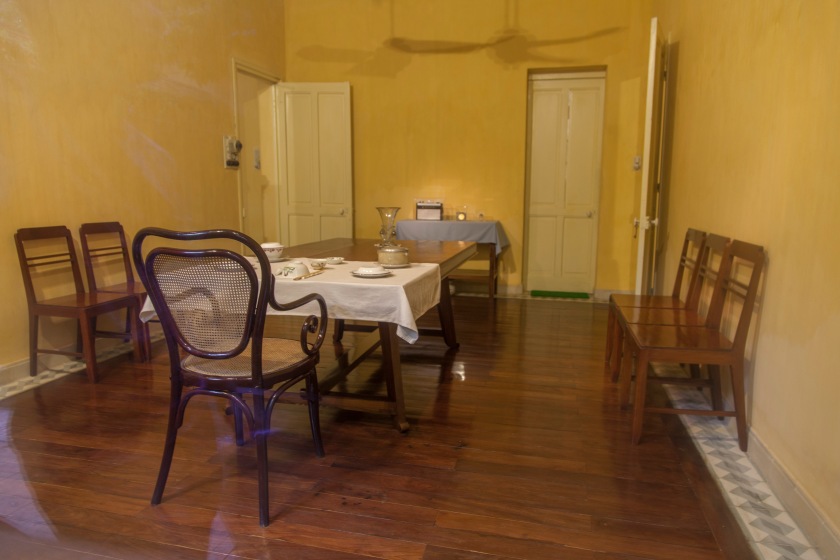
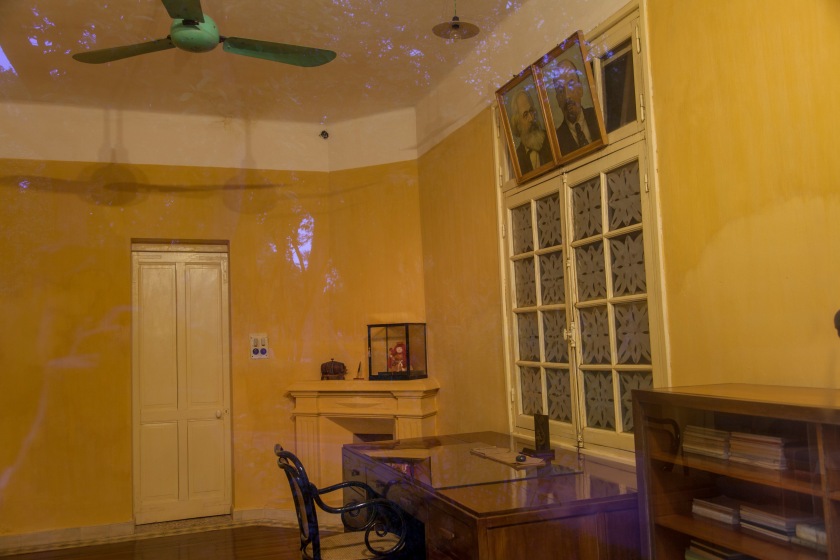
According to Sunny, the leader only spent four years in this house, as it had a very bad feng shui location. After that, he moved to a wooden stilted house – located pretty much next door and which I somehow didn’t take a picture of – and lived here for eleven years until his death. By the way, he lived alone, and officially didn’t have any children, although he was married, but Sunny claims that he has an illegitimate son who still lives in Hanoi and who the government still refuses to officially recognise as Ho Chi Minh’s son.
There is yet another attraction in this garden, a much more ancient one that has nothing to do with Ho Chi Minh: it is a pagoda standing on a single pillar in the middle of a lotus pond and built in the XI century. There are only two pagodas like that in the world, the second one being in Thailand. In fact, later, when viewing the photos I’d taken, I got a strong feeling of déjà vu, as if I had already seen this pagoda, and then I remembered how a very long time ago I had seen a book with the works of the Russian artist Ilya Glazunov, with a sketch of this very pagoda.
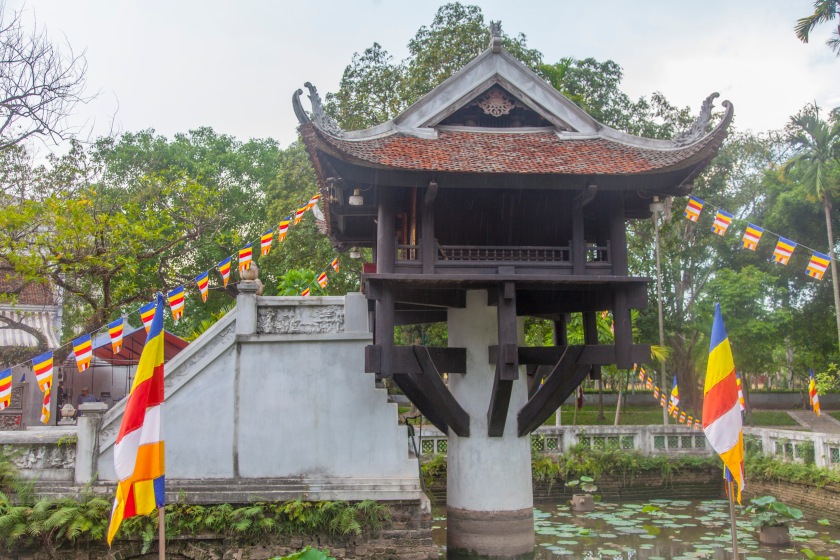
The last place, where we reached by walking, was some kind of temple, not identified by Google, with a pretty crude interior design. On the walls there are images of scary-looking people, and Sunny said that people come to this temple to appease infernal sinners, so that those don’t try to spoil their lives out of envy. This is done very generously: with fruits, ChocoPie’s and even chicken and beer. We can hear loud chants from the next room.
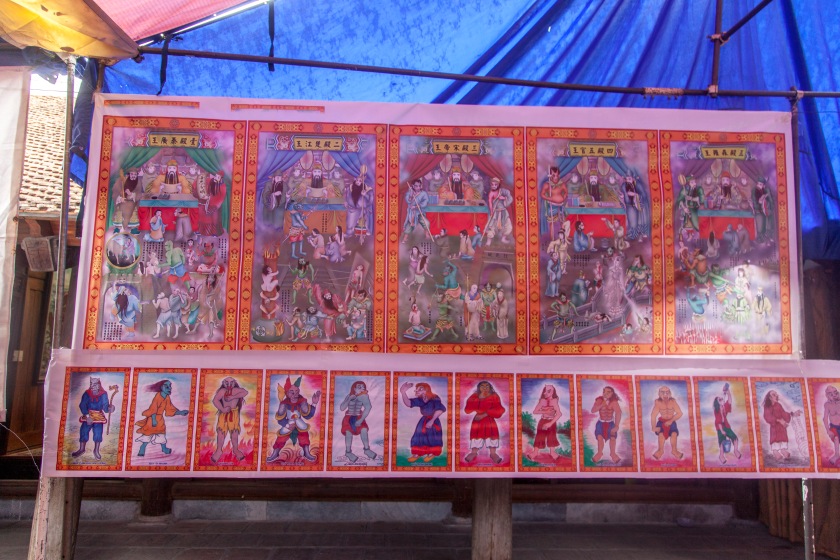
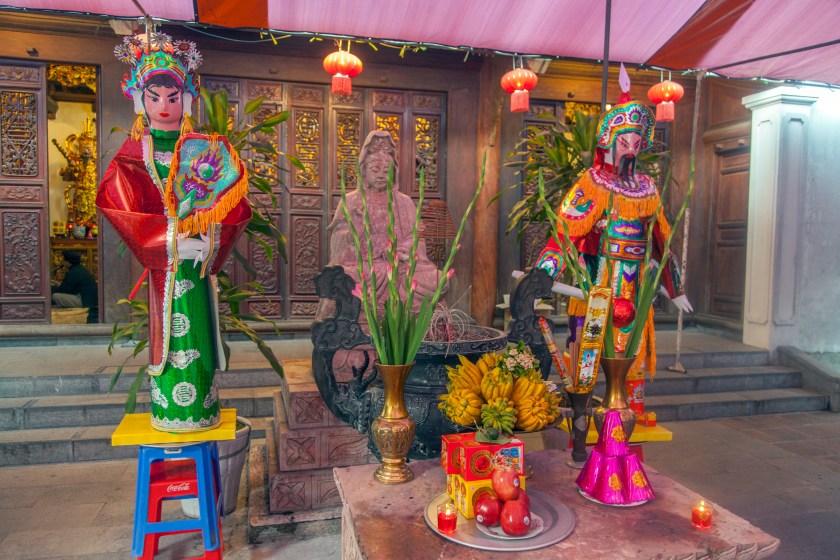
We then got in the car again and drove back to the Old Quarter, where we walked right up to the Hoan Kiem Lake.
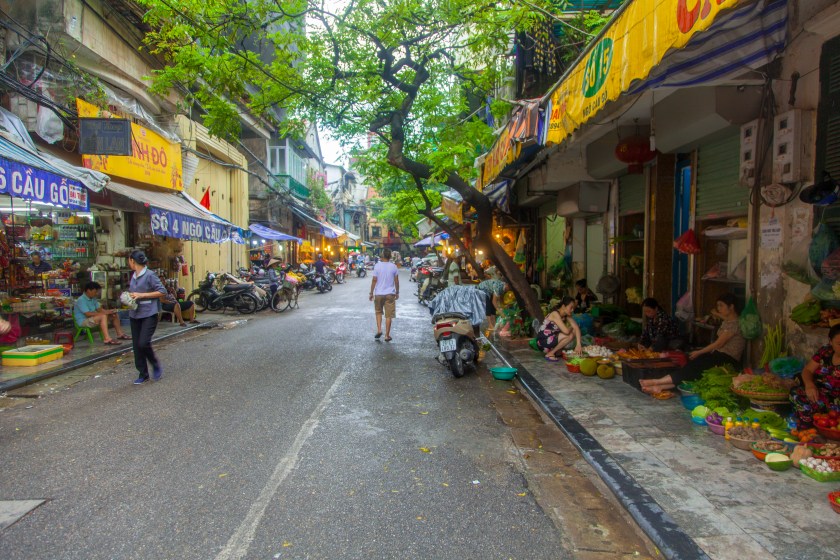
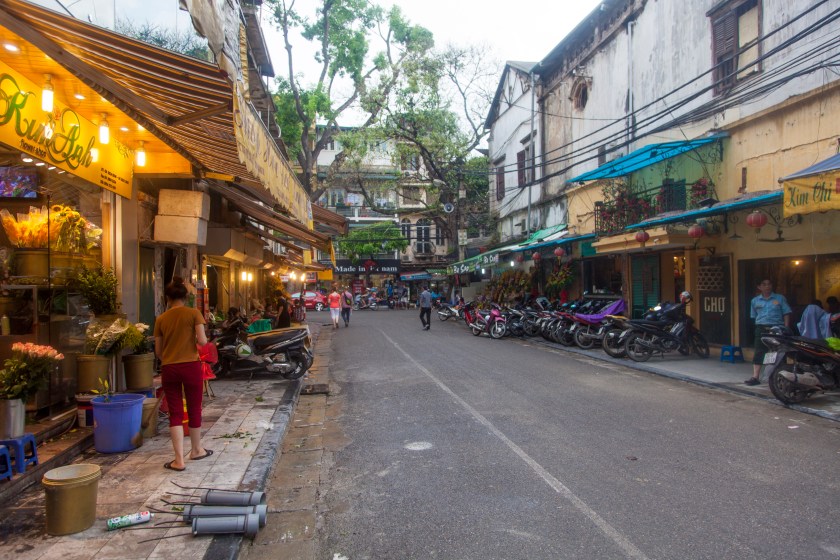
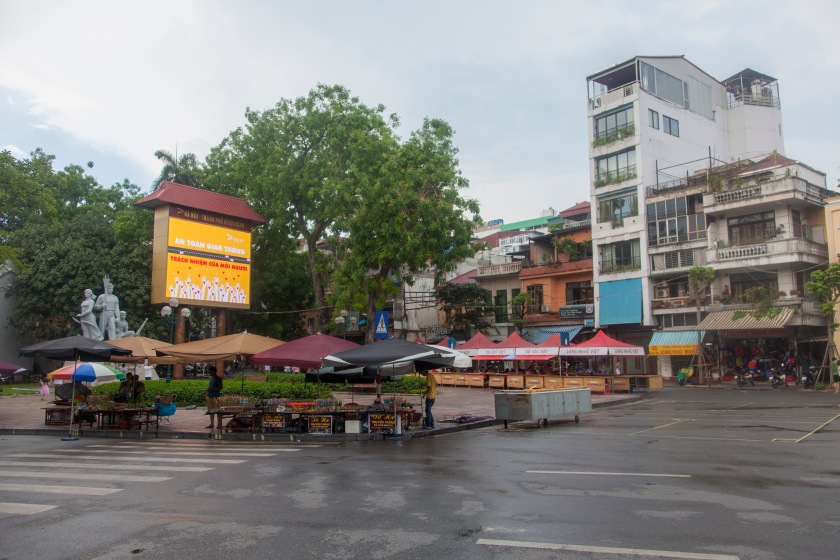
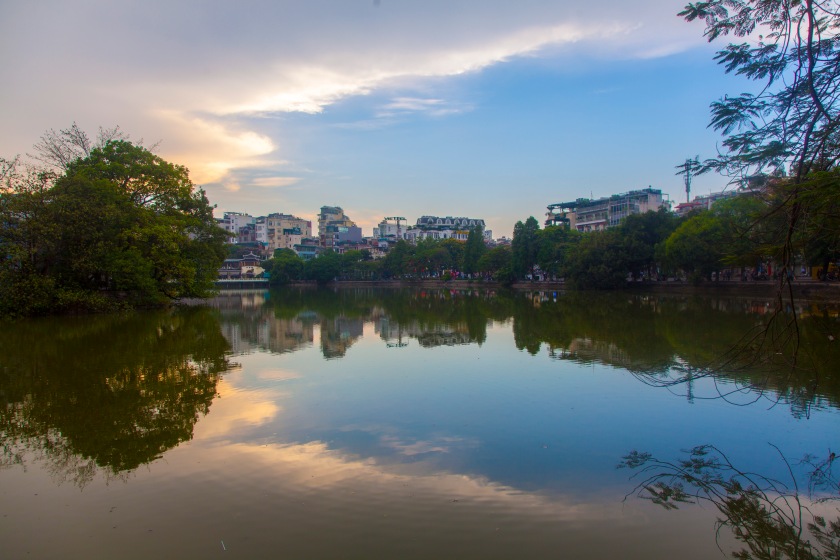
We already came here yesterday, but as I wrote, didn’t enjoy it too much, having to push through the impassable crowd. Today, there were much less people, and besides Sunny took us to the Ngoc Son temple, located right on the lake. Once again we saw the same kind of tiger and dragon on the gates, indicating something related to education.
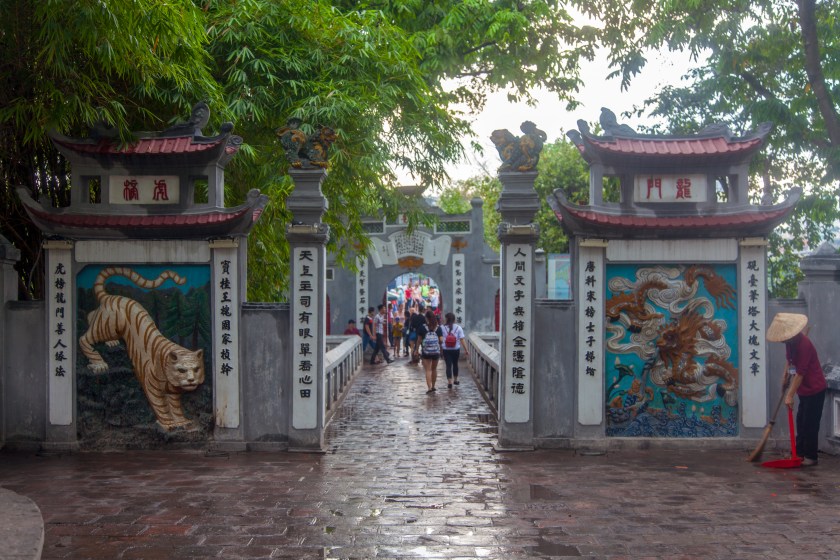
The lake is home to a rare kind of turtles, and the name Hoan Kiem literally translates as the Lake of the Returned Sword – according to a legend, General Le Loi received a magic sword that helped him repel the Chinese attack, and then a golden turtle surfaced from the lake and took the sword back, deciding that the General no longer needed it and had to return it.
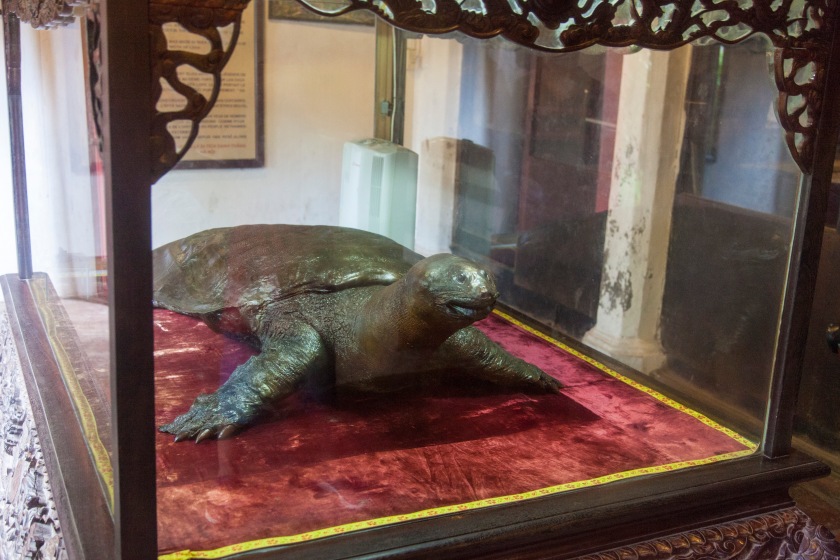
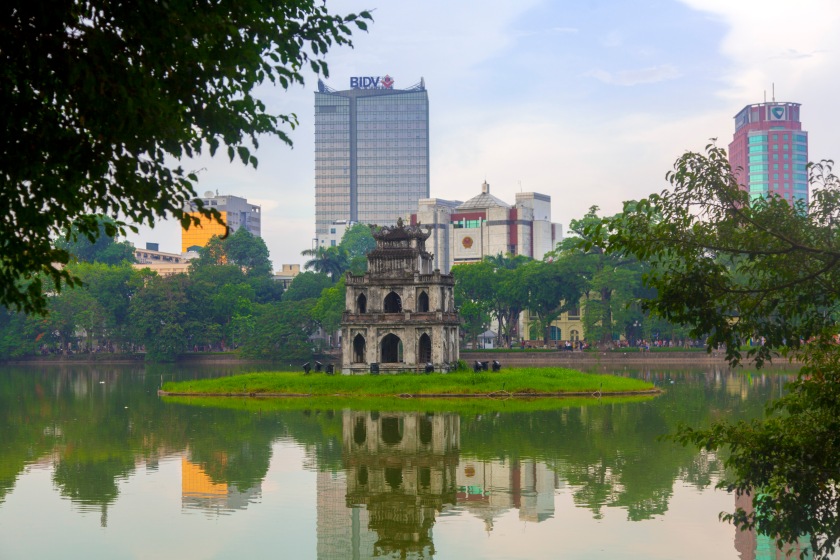
The Ngoc Son temple itself is dedicated to the hero Tranh, who defeated the Mongols in the 13th century, preventing them from seizing the country. Sunny said that there are three historical figures who are considered the “fathers” of the Vietnamese people: the emperor Lac Long Quan, believed to be the ancestor of all the Vietnamese; the aforementioned hero Tranh and, of course, Ho Chi Minh.
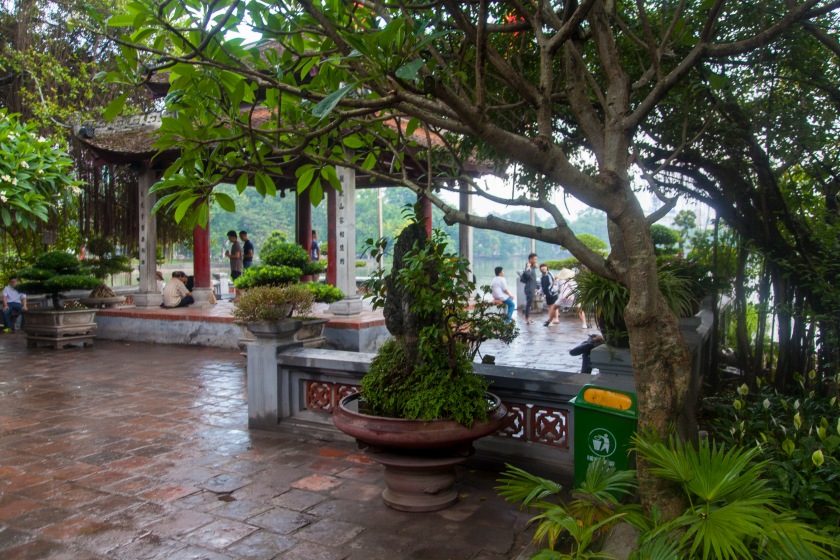
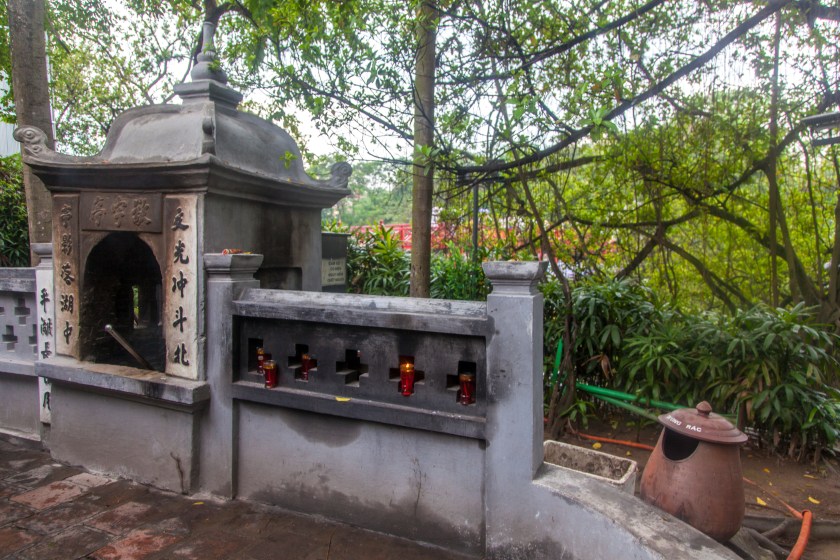
After the temple visit we had about 45 minutes of free time, which we spent walking along the lake and watching the locals.
And then we went to see a water puppet show. The idea of a water puppet theatre is that the actors hide behind a screen, knee-deep in water, and control the puppets with long bamboo rods, which can’t be seen under the water. Obviously, the culture of such performances originated in rice fields. We were shown a dozen of acts, including separate dances of a dragon, a phoenix and a unicorn, and then one featuring all three plus a turtle (these four animals are considered sacred in Vietnam and are symbolic: the dragon for power, the unicorn that looks pretty strange and doesn’t even have a horn – for peaceful life, the phoenix for beauty, and the turtle for longevity), scenes showing peasants growing rice or repelling a fox trying to steal a duck from them, Le Loi returning the sword to the turtle, etc. The whole performance was accompanied by national instruments and singing, very interesting.
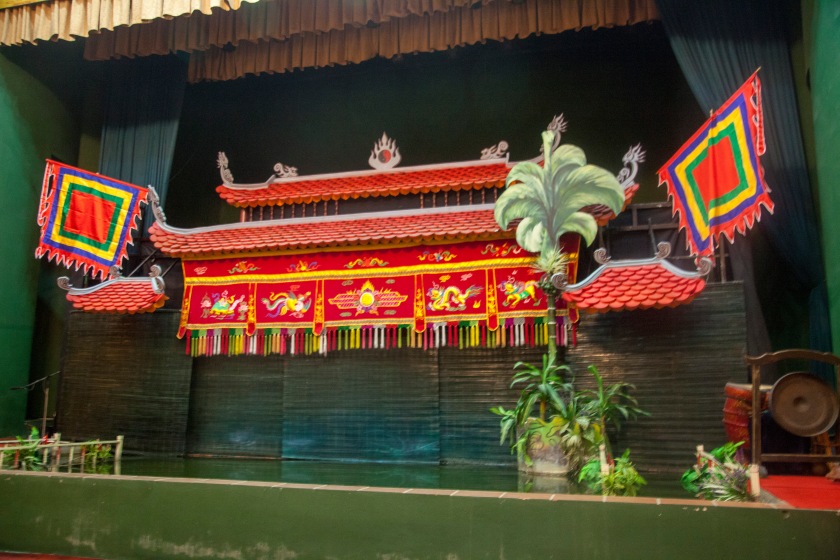
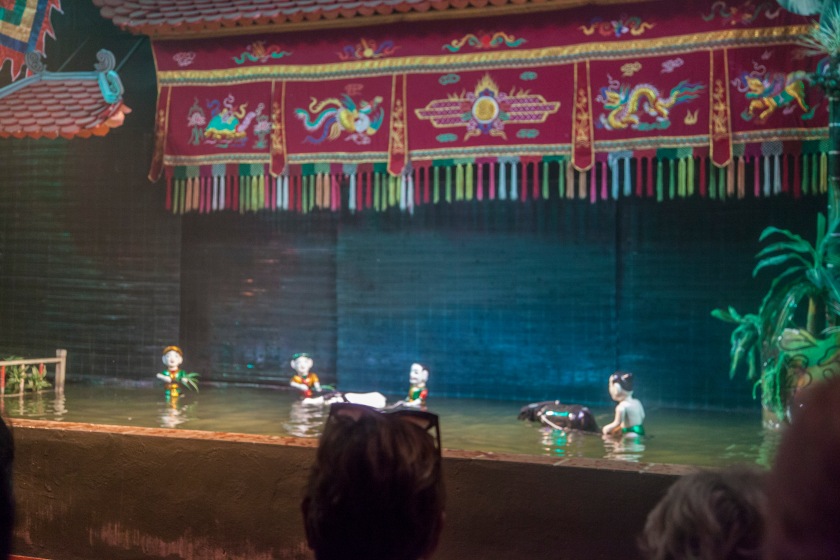
After the performance, we said goodbye to Sunny and went to have dinner at the Ngon Villa restaurant, where you can pay 360,000 dong, or about 15 USD and choose anything from the menu in any quantities (out of dishes marked with one and two asterisks – for those marked with three we’d have had to pay 580,000). So we tried meat and chicken cooked in different ways, a jellyfish salad (which we didn’t like), baked oysters, clams, snails (didn’t like them either) and a dessert of coffee jelly with coconut milk. Unbelievable, but this was our most expensive meal in Vietnam so far.
